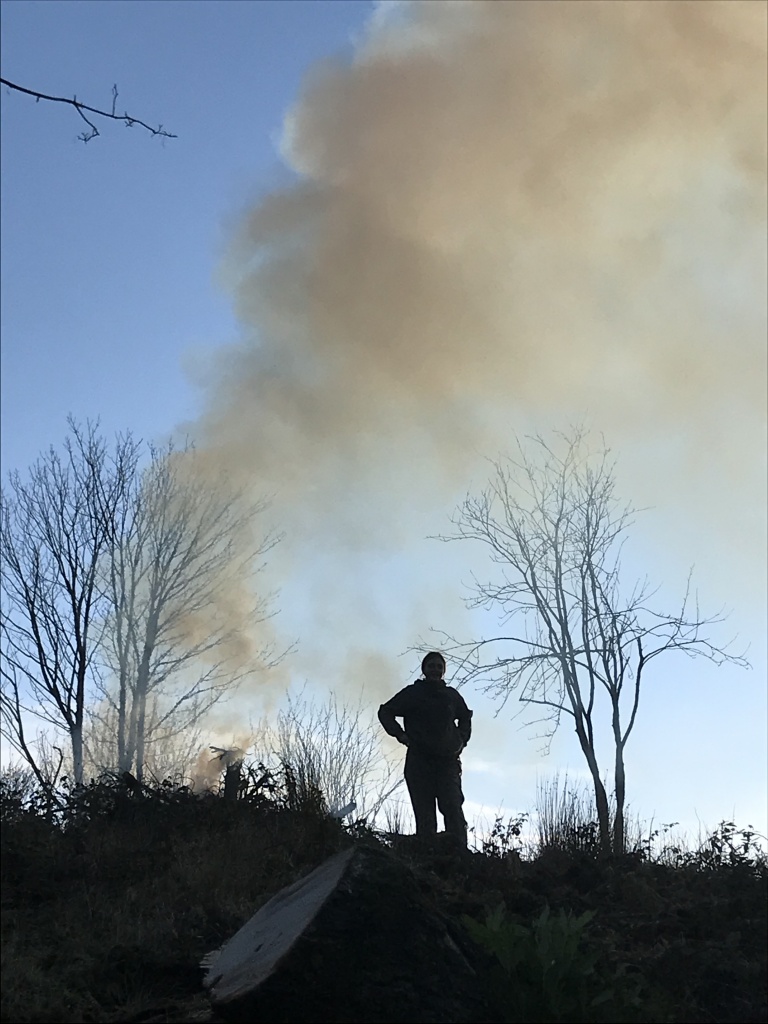
Over the last 3 years, we have felled the block of forestry trees which is in the middle of Glengorm. The trees had to be felled as they had reached their maturity and were all starting to fall over. This was done over 3 years as we were limited to how much weight the Glengorm road could take and also to only taking the wood out between April and September, the drier months, to help the roads.
The majority of the wood was taken away and sold, but we have kept a supply to keep our wood chip boiler well fired for the foreseeable future. Coinciding with forest felling, our rhodedendrons were carrying a disease, so we were then instructed by the Forestry commision to clear an area with a 500m diameter to clear all the affected bushes.
An end result of all this felling and clearing is that, a lot of the trees left were exposed and left unsupported, and subsequently they have all being falling like dominoes.
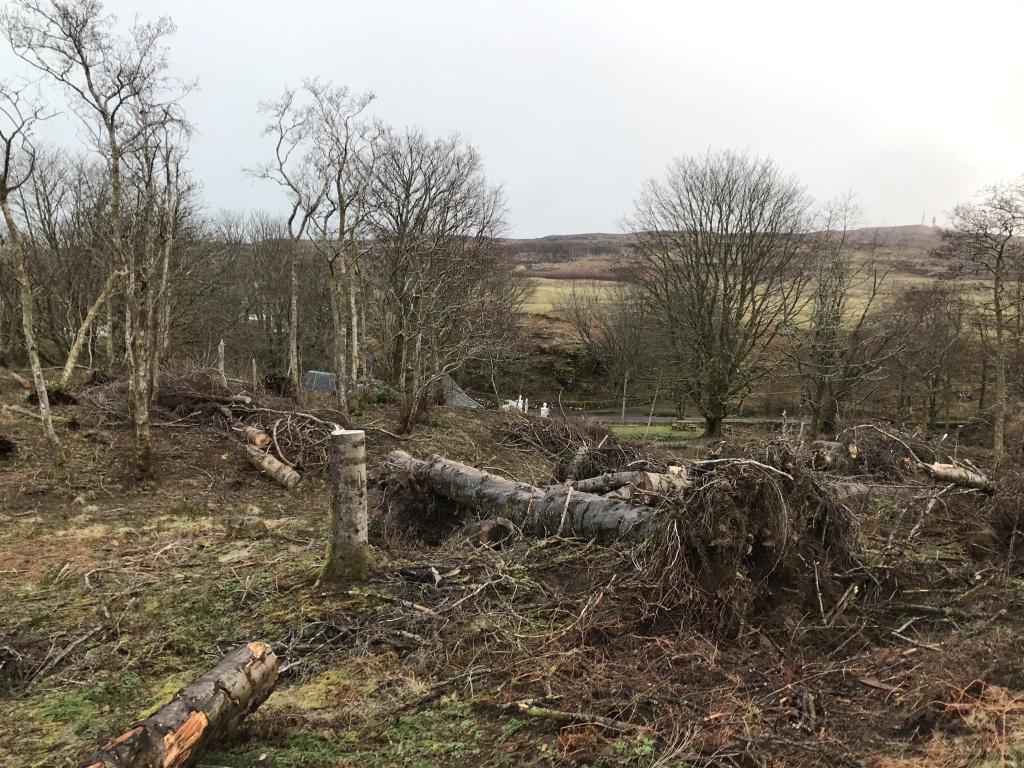
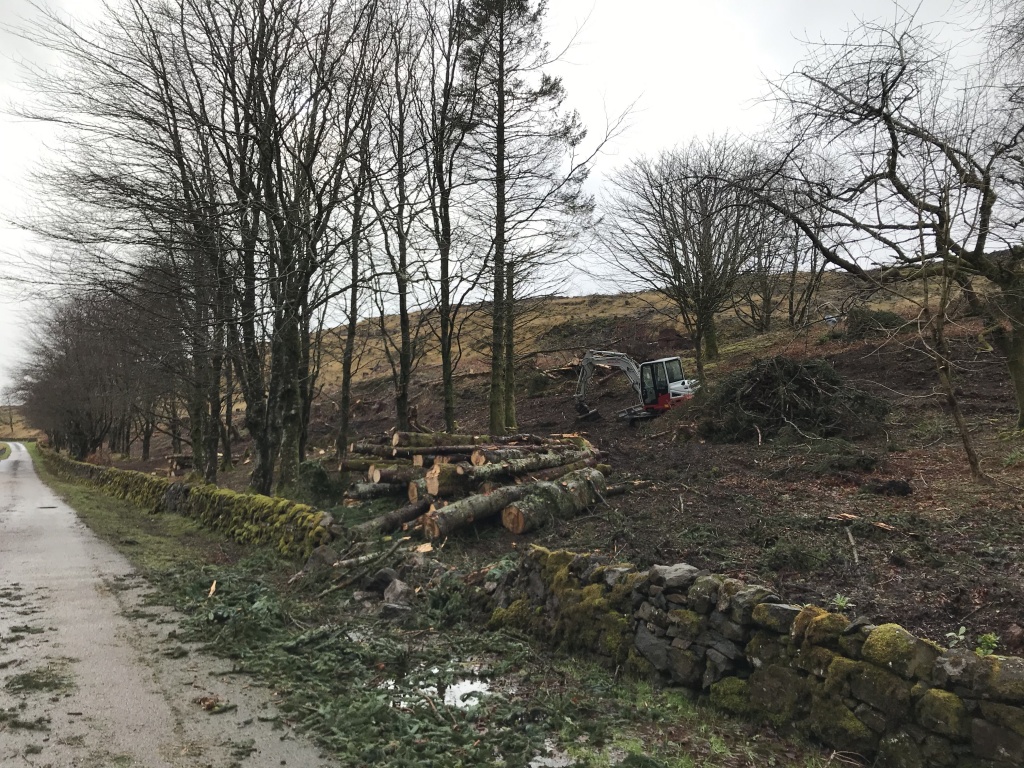
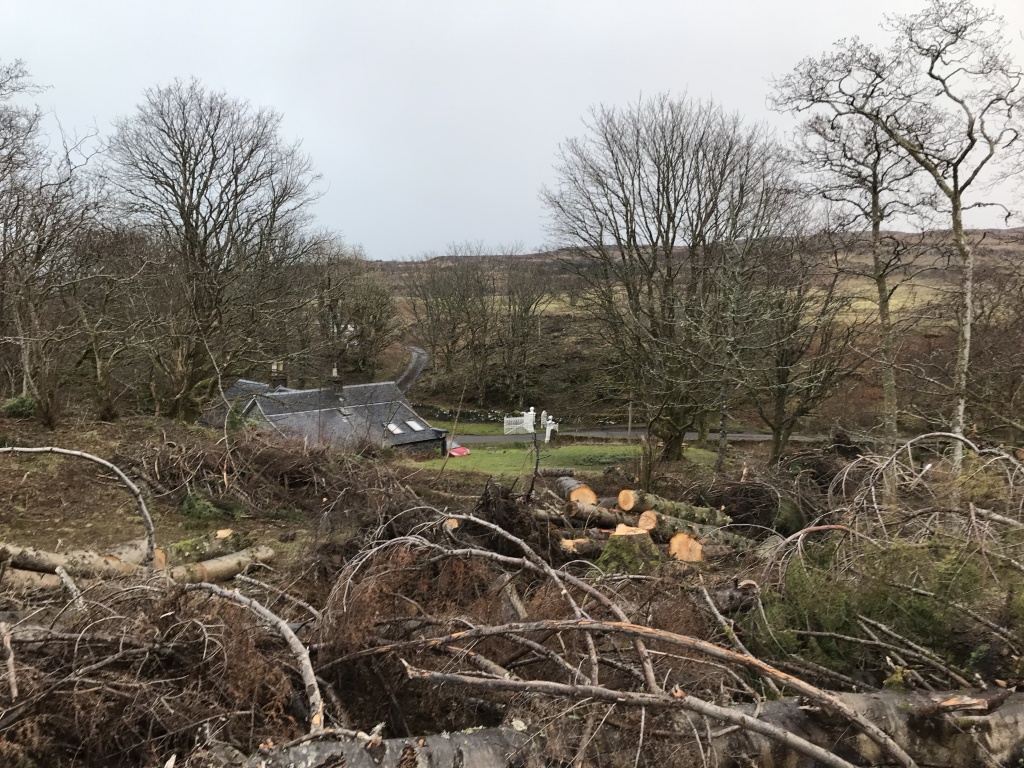
The high winds and sheer volume of rain that we have had this winter has waterlogged the ground and we have been unable to do anything to prevent the trees from falling. The huge noble firs by the Lodge have all gone now, some huge ones fell, and we had to chop down the rest to avoid further damage to the walls and telephone lines. The Beech along the side of the road still stand and we hope they will hang in there. Around the estate there is a lot of blown over Oak trees and at the moment we are leaving them in situ to see if they will evolve and adapt and start growing up in this position as we already have some really old ones which have done this.
This winter we have completed replanting 90,000 native hardwood trees in the old forest which include Hazel, Hawthorne, Blackthorn, Rowan, Alder, Oak, Cherry, Aspen and Birch. We have had to fence off a huge area surrounding the forest and Castle to prevent the deer from getting in and eating them. This year we are going to replant closer to home and finish tidying up all the recent casualties in sight of the castle.
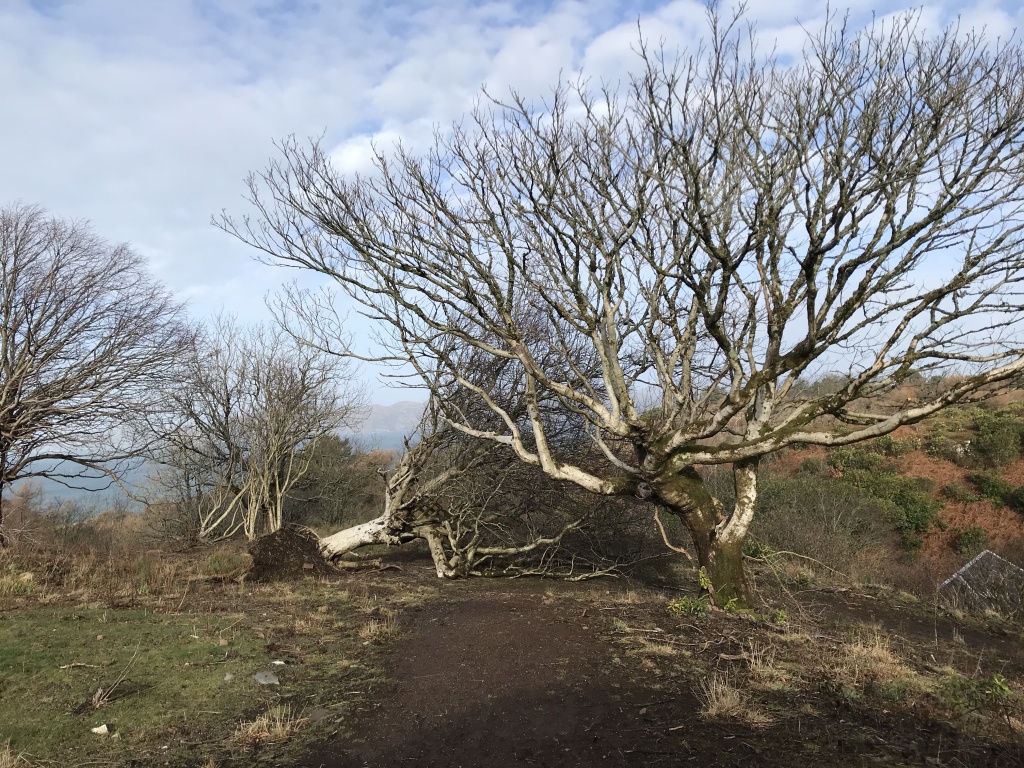
The tidying up is ongoing. When the weather is not too wet, Tom is out with his willing helpers chainsawing, shifting or burning debris to ty and get us away from the graveyard of trees. The piles of tree trunks and logs are still stacked where they fell, but they will get moved soon and will be used for firewood or will be chipped for our boiler.

